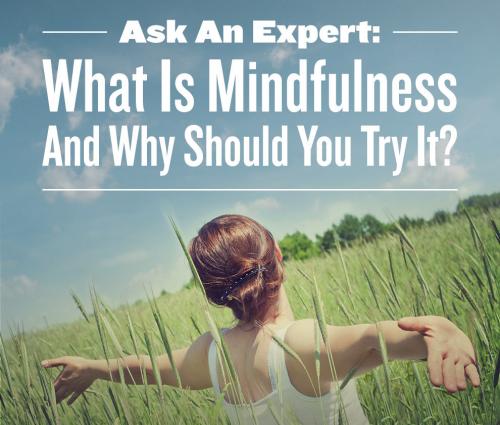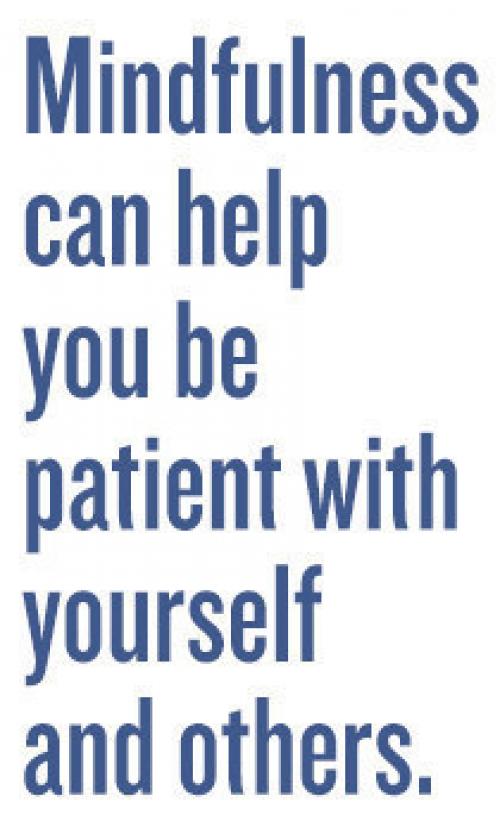Ask An Expert: What Is Mindfulness And Why Should You Try It?

Thinkstock
Mindfulness is a growing movement that encourages people to take a minute to notice their body and its surroundings. To get a little more information about mindfulness, what it is and isn’t, and how people new to mindfulness can begin practicing awareness, we spoke with Cheryl Jones — one of Aetna’s wellness program strategy leads, who is trained in mindfulness and completed the Teacher Development Intensive in Mindfulness-Based-Stress Reduction (MBSR).
What is mindfulness?
Cheryl Jones: Mindfulness is paying attention or noting whatever is happening in the moment with a gentle and open mind. It involves being present in the moment, the one you’re in right now. Mindfulness doesn’t involve chanting, bowing, sitting cross-legged, or burning incense.

How do we practice mindfulness?
CJ: Mindfulness can be practiced formally through meditation where we pause and notice breathing, thoughts, feelings, sensations and surroundings. It can also be practiced informally while driving, during conversations, while exercising, and as you’re eating.

What are the benefits to practicing mindfulness?
CJ: Mindfulness can help lower stress and builds resilience so you can meet the demands of your day with more ease. It allows you to have more clarity to solve problems. Mindfulness can help you be patient with yourself and others. And it can make you more effective and feel happier.
What would you say to people who feel like they’re too busy to practice mindfulness?
CJ: Even five minutes of mindfulness practice can have a powerful impact on your day. If that seems like too much, you can simply pause and pay attention to your breathing a few times as you do the tasks of your day. You can try doing just one task at a time.
What are some introductory mindfulness techniques anyone can practice?
CJ: You can start by trying to come off of “autopilot” and beginning to be more present throughout your day.
For example:
• When you wake up, take a few minutes to lie in bed and stretch your body. Notice any sensations.

• Drive to work with the radio off. Notice your thoughts and feelings as you drive. If someone cuts you off or if you are sitting in traffic, take a breath.
• As you walk to the office, pay attention to your feet connecting with the ground, even for just a few steps.

• Take a breath between phone calls and meetings.
• Try to sit down and relax when you eat your lunch, even if it’s just for five minutes. Avoid eating while driving or working. Take a breath. Notice the color, the texture and the smell of your food. When you think you’re done chewing, chew it five more times.
• As you talk to people, notice the impact they have on you. Be aware of how your words and attitudes are impacting others, too.
• Notice if your bedtime routine is relaxing or busy and what your state of mind is when you get into bed.
Is there anything people should be aware of before beginning a routine?
CJ: As you start to practice mindfulness you will begin to see things as they are rather than how you wish they were. You may notice some things you want to change. It’s important to be patient with yourself and make one small change at a time.

For people who are interested in a deeper dive into mindfulness, where would you recommend they go?
CJ: Check out yoga or retreat centers in your community to see if they offer mindfulness meditation or group classes to learn about and practice mindfulness.